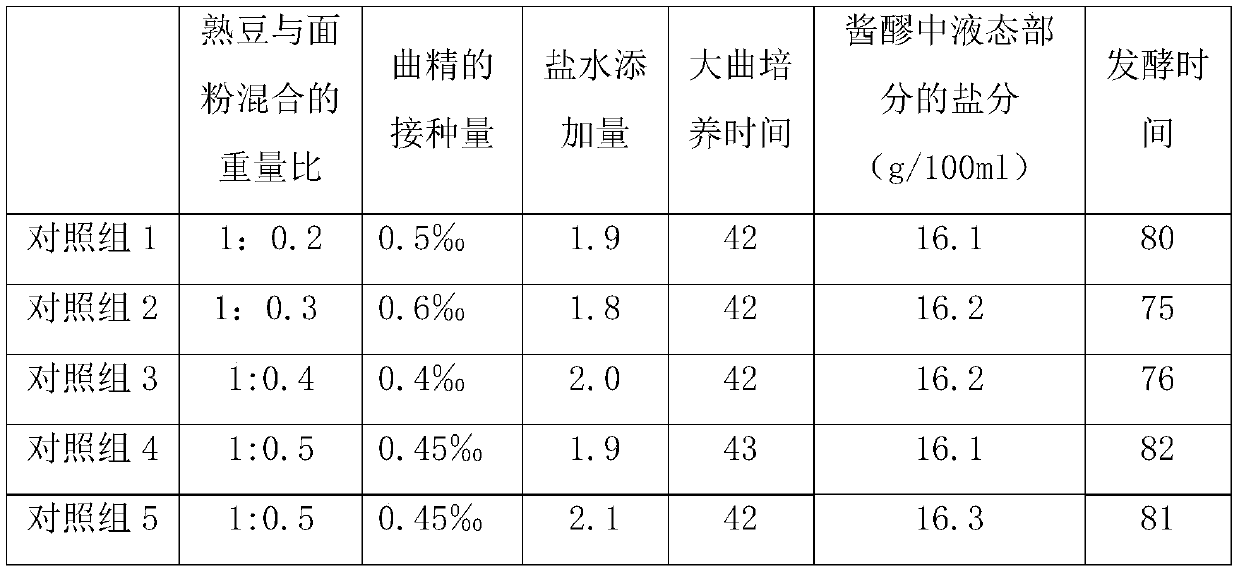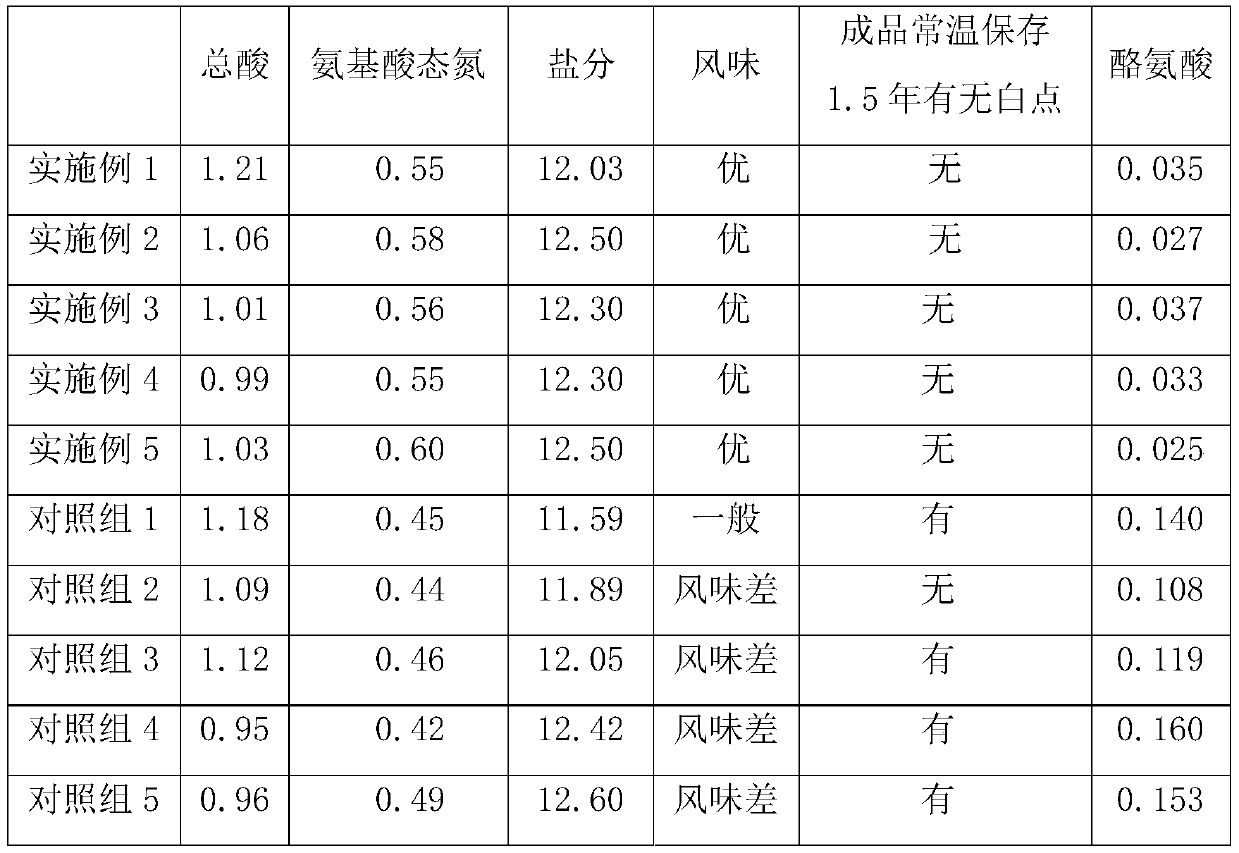Brewing process of bean sauce mash for soybean sauce
A technology for soybean paste and paste embryo, which is used in food ingredients as an odor improver, food science and other directions, can solve the problem of white spots in soybean paste, and achieve the effects of inhibiting the production of white spots, increasing starch quality, and enriching nutrients.
- Summary
- Abstract
- Description
- Claims
- Application Information
AI Technical Summary
Problems solved by technology
Method used
Image
Examples
Embodiment 1
[0033] A brewing process for soy sauce embryos, comprising the following steps:
[0034] (1) material preparation
[0035] Soybean Soaking After removing impurities and cleaning, the soybeans are transported to the bean soaking tank, and a sufficient amount of tap water is added to soak the beans. After soaking for 5 hours, they become soaked beans. Transport the soaked soybeans to the cooking pot, cook them with a cooking pressure of 0.08MPa for 15 minutes, and then take them out of the pot. After the cooked beans are cooled, they are mixed with flour and strains respectively. The weight ratio of soybeans to flour is 1:0.6, and the inoculation ratio is 0.3‰ (koji essence) of the weight of raw materials (soybeans and flour). Stir the mixture until smooth.
[0036] (2) Daqu cultivation
[0037] Put the well-mixed mixture into the koji pond for cultivation, and the cultivation time of Daqu is 42 hours. During the Daqu cultivation process, the temperature of the koji material...
Embodiment 2
[0042] A brewing process for soy sauce embryos, comprising the following steps:
[0043] (1) material preparation
[0044] After the soybeans are cleaned and cleaned, they are transported to the bean soaking tank, and a sufficient amount of tap water is added to soak the beans. After soaking for 10 hours, they become soaked beans. Transport the soaked soybeans to the cooking pot, cook them with a cooking pressure of 0.09MPa for 14 minutes, and then take them out of the pot. After the steamed cooked beans are cooled, they are mixed with flour and strains respectively. The weight ratio of soybeans to flour is 1:0.8, and the inoculation ratio is 0.26‰ (koji essence) of the total weight of raw materials (soybeans and flour). Long stir the mixture well.
[0045] (2) Daqu cultivation
[0046] Put the evenly mixed mixture into the koji pond for cultivation, and the cultivation time of Daqu is 40 hours. During the cultivation of Daqu, the temperature of the koji should be controll...
Embodiment 3
[0050] A brewing process for soy sauce embryos, comprising the following steps:
[0051] (1) material preparation
[0052] After the soybeans are cleaned and cleaned, they are transported to the bean soaking tank, and a sufficient amount of tap water is added to soak the beans. After soaking for 8 hours, they become soaked beans. Transport the soaked soybeans into a cooking pot, cook them with a cooking pressure of 0.075 MPa for 15 minutes, and then take them out of the pot. After the steamed cooked beans are cooled, they are mixed with flour and strains respectively. The weight ratio of soybeans to flour is 1:0.75, and the inoculation ratio is 0.27‰ (koji essence) of the total weight of raw materials (soybeans and flour). Long stir the mixture well.
[0053] (2) Daqu cultivation
[0054] Put the well-mixed mixture into the koji pond for cultivation, and the cultivation time of Daqu is 43 hours. During the cultivation of Daqu, the temperature of the koji should be controll...
PUM
 Login to View More
Login to View More Abstract
Description
Claims
Application Information
 Login to View More
Login to View More - R&D
- Intellectual Property
- Life Sciences
- Materials
- Tech Scout
- Unparalleled Data Quality
- Higher Quality Content
- 60% Fewer Hallucinations
Browse by: Latest US Patents, China's latest patents, Technical Efficacy Thesaurus, Application Domain, Technology Topic, Popular Technical Reports.
© 2025 PatSnap. All rights reserved.Legal|Privacy policy|Modern Slavery Act Transparency Statement|Sitemap|About US| Contact US: help@patsnap.com


